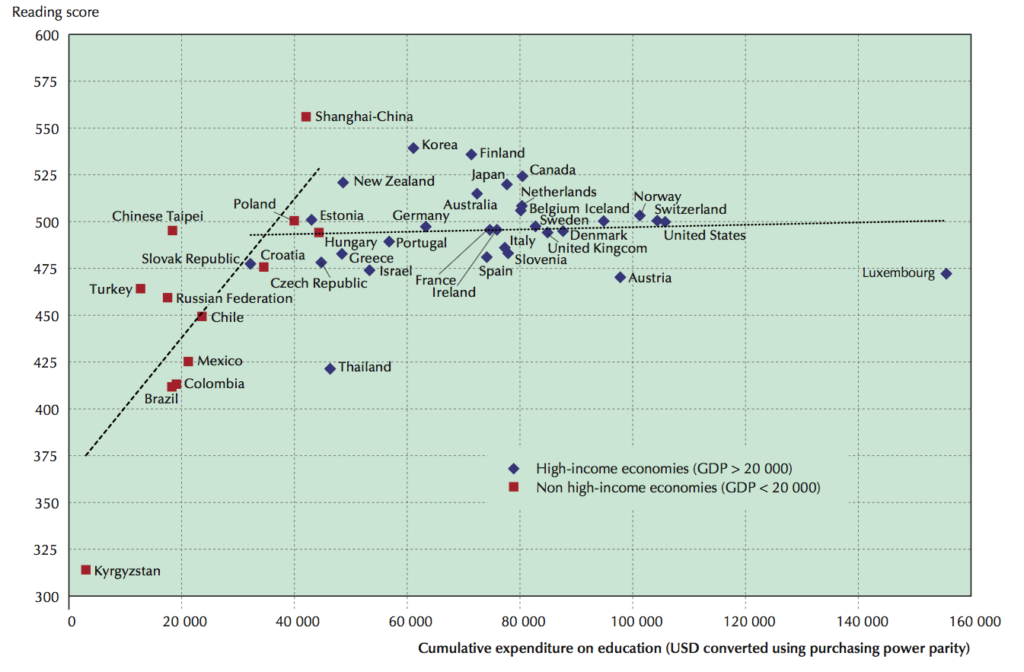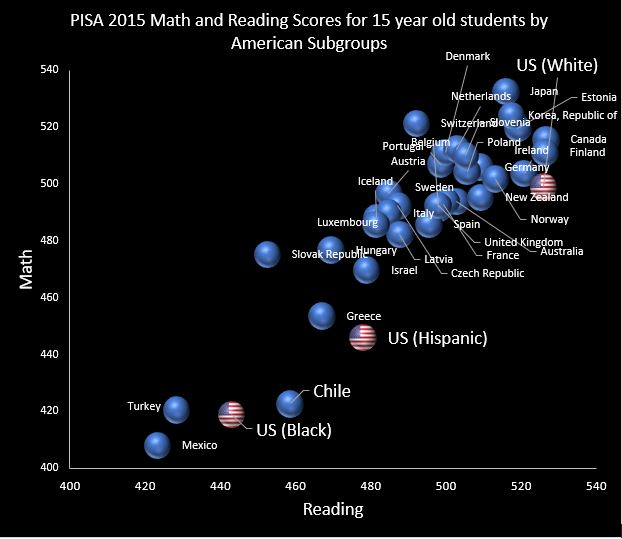The Economist published an interesting article recently titled, “How Chile combines competition and public funding.” The piece included a graphic demonstrating how Chilean students fared on the Program for International Student Assessment, an international test that every three years measures reading, mathematics and science literacy of 15-year-olds. The assessment also includes measures of general or cross-curricular competencies, such as collaborative problem solving.
The graphic revealed how the PISA scores of Chilean students compared to those of students in nearby countries, provided the Organisation for Economic Cooperation and Development average, and showed the market share for various schooling sectors.
Here is the summary graphic:
Chile created a national voucher program in 1981, and lawmakers have made significant revisions to improve equity in recent years. Argentine scholar Mariano Narodowski performed a deep dive on the Chilean voucher program in 2018.
So, when you are an edu-nerd like me and you see something like this, it makes you say, “Hmmm … I wonder how Chile compares to student subgroups in the United States?” Well wonder no more!
Soak up that achievement gap, America, and note for the record that Chilean students attending school in a developing nation outscored American black students – after at least a decade and a half of Chilean improvement.
Greece represents American Hispanic’s nearest international achievement neighbor. American Anglo students, meanwhile, sit comfortably toward the top among the higher performing European and Asian systems but still get beat by countries like Estonia.
If I were feeling unusually cruel, I would look up the average spending per pupil in Chile, Estonia, Greece and the United States. Well, I can tell I’m not fooling you, dear reader; we all know how cruel I can be, so here goes:
 Chileans surpassed the average scores for American black students on PISA despite an average per-pupil spending well below half the American average. American Hispanic students score in the vicinity of Greece, which spends more than Chile, but again a mere fraction of the spending in the United States.
Chileans surpassed the average scores for American black students on PISA despite an average per-pupil spending well below half the American average. American Hispanic students score in the vicinity of Greece, which spends more than Chile, but again a mere fraction of the spending in the United States.
Estonia spends less than Greece, and well below half the level of the United States, but outscores America’s highest scoring racial/ethnic subgroup. Estonia, by the way, also has an extensive system of public and private school choice.
Low-performing students have the most to gain from choice, but even relatively high-performing American subgroups may be underperforming their potential. A universal system of choice with a significant funding advantage for low-income families could help students of all backgrounds flourish.





[…] Redefined Online, Apr […]